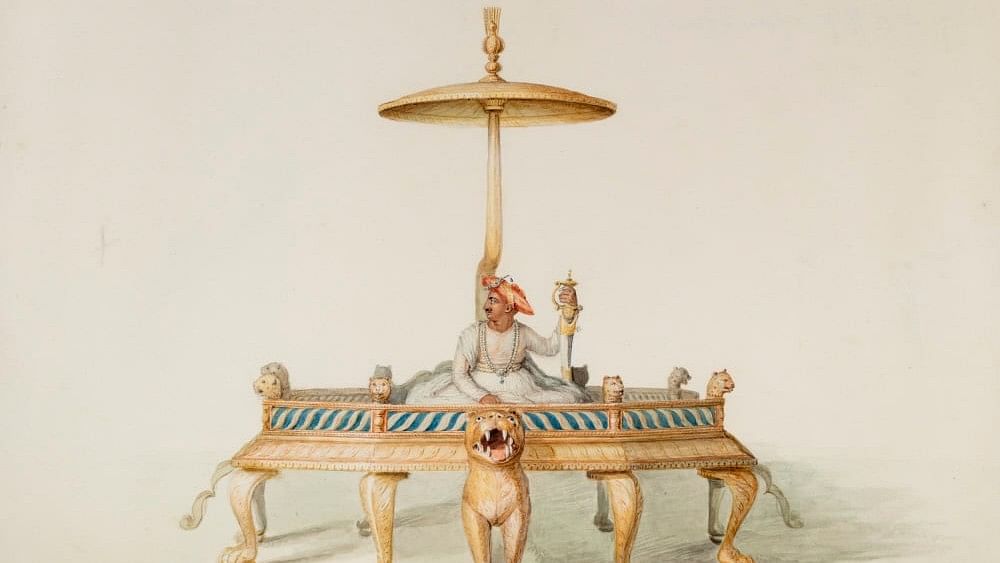
Tipu Sahib Sultan Enthroned by Anna Tonelli (1800).
Pic courtesy: National Trust Images
At 32 feet wide, a monumental 1820 painting commemorates the victory of Tipu Sultan over the British East India Company in 1780, at the Battle of Pollilur (Pullalur), near Kanchipuram in Tamil Nadu. This was one of the most crucial events of the Second Anglo-Mysore War, which was fought between 1780–84, as it was Britain’s first and most devastating defeat on Indian soil.
Tipu’s forces ambushed the British — who were led by William Baillie — thanks to the tips that arrived through the former’s spy network. Even as they were winning, Hyder Ali, Tipu’s father and Sultan of Mysore, arrived on the scene with reinforcements to cement a decisive victory. In the aftermath of the battle, nearly 200 enemy soldiers were captured and Bailie was taken prisoner.
In Pollilur, the Mysore army had a technical advantage — they were disciplined and better equipped than the Company forces. We encounter the action-packed battle through this extraordinarily detailed painting, which narrates the battle’s turning point. Ammunition has just exploded, causing chaos amongst British ranks. A bloodbath ensues — decapitated heads, clanging swords and bursting cannons. Surrounded by the Mysore forces, the horror of defeat is etched on the faces of the British army. Time slows down in two parts of the painting. In one, Baillie anxiously bites his nails as he seeks refuge within the deceptive safety of his green palanquin. Meanwhile, the Mysore lancers — mounted atop camels, elephants and horses — are quickly closing in on the British redcoats protecting the colonel. They are supported by their French allies, who we can recognise by their distinctive whiskery moustaches.
The second pocket of stillness lies to the left of the painting. The French commander Lallee gazes through his telescope as Hyder and Tipu, seated in golden palanquins, advance towards the battlefield. Assured of a win, they head towards the battlefield accompanied by musicians, exuding calm amidst the carnage. The artist’s depiction of his royal patrons, in strict profile, smelling flowers as if at a pleasure party in the garden, emulates idealised visions of Deccani nobility.
This painting is amongst three surviving copies of a mural at Tipu’s Dariya Daulat Bagh palace, commissioned to commemorate his victory. Today, it is a reminder of his technocratic achievements.
A modern ruler from pre-colonial India, he equipped his sepoys with rifles and cannons based on French designs, used rockets in warfare before any European power and built an impenetrable fortress at Srirangapatna. Not content with being a renowned military leader, he also experimented with water power to run machinery, introduced sericulture in Mysore, traded across the Persian Gulf and constructed irrigation systems and dams in the region. The Battle of Pollilur is a significant moment in the history of the Indian peninsula and a testament to Tipu and his army’s indelible legacy in the subcontinent.
Discover Indian Art is a monthly column that delves into fascinating stories on art from across the sub-continent, curated by the editors of the MAP Academy. Find them on Instagram as @map_academy